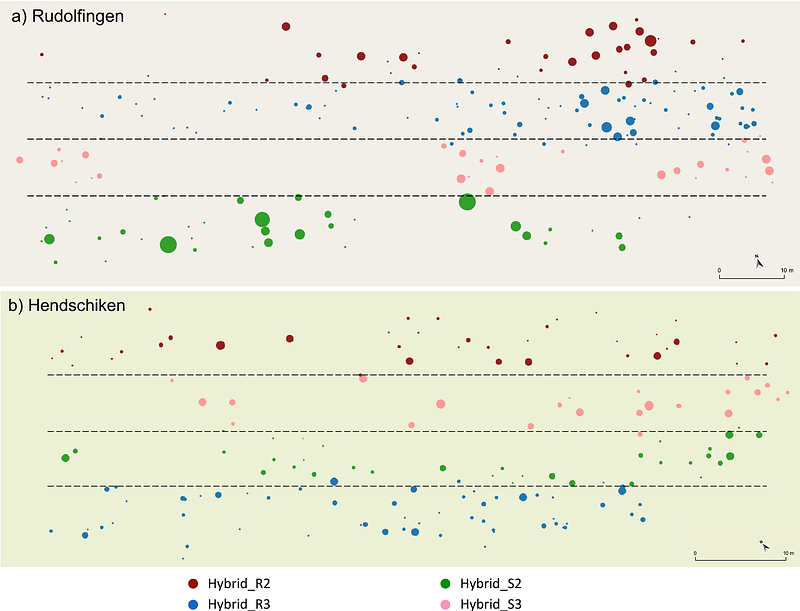Molecular epidemiology of Cercospora leaf spot on resistant and susceptible sugar beet hybrids

Molecular epidemiology of Cercospora leaf spot on resistant and susceptible sugar beet hybrids
Chen, C.; Keunecke, H.; Neu, E.; Kopisch-Obuch, F. J.; McDonald, B. A.; Stapley, J.
AbstractCercospora leaf spot (CLS), caused by Cercospora beticola, is a major foliar disease impacting sugar beet production worldwide. The development of new resistant sugar beet hybrids provides a powerful tool to better manage the disease, but it is unclear how these hybrids affect CLS epidemiology. We used a molecular epidemiology approach to dissect natural epidemics of CLS affecting two susceptible and two resistant sugar beet hybrids with different levels of resistance at two field sites. Infected plants were geotagged on a weekly basis. Isolations of C. beticola were made from infected leaves and genotyped using six simple sequence repeat loci to identify clones. We determined that CLS epidemics had a later onset in plots planted to resistant hybrids, but once the pathogen established an infection, there was little difference between resistant and susceptible hybrids in the probability of localized spread and dispersal. We found that different clones often infected the same leaf and that clusters of infected plants were often colonized by a mixture of clones. There was little overall difference in genetic diversity between resistant and susceptible hybrids, however genotypic evenness differed at one site. In this site we found one genotype restricted to the resistant cultivars at a high frequency. We established that infections were not randomly distributed across the fields and we found that a single clone could spread over a distance of 100 m during a growing season.